
Charles Borromeo was an Italian Catholic prelate who served as Archbishop of Milan from 1564 to 1584. He was made a cardinal in 1560.

The Archdiocese of Milan is a Latin Church ecclesiastical territory or archdiocese of the Catholic Church in Italy which covers the areas of Milan, Monza, Lecco and Varese. It has long maintained its own Latin liturgical rite usage, the Ambrosian rite, which is still used in the greater part of the diocesan territory. Among its past archbishops, the better known are Ambrose, Charles Borromeo, Pope Pius XI and Pope Paul VI.

Federico Borromeo was an Italian cardinal and Archbishop of Milan, a prominent figure of Counter-Reformation in Italy. His acts of charity, particularly during the famine of 1627-8, and his devoted heroism in the plague of 1630 are well known from the account in Alessandro Manzoni's novel The Betrothed. He was a great patron of the arts and founded the Biblioteca Ambrosiana, one of the first free public libraries in Europe. In 1618 he added a picture gallery, donating his own considerable collection of paintings. His published works, mainly in Latin, number over 100. They show his interest in ecclesiastical archaeology, sacred painting, and collecting.

The aristocratic House of Borromeo were merchants in San Miniato around 1300 and became bankers in Milan after 1370. Vitaliano de' Vitaliani, who acquired the name of Borromeo from his uncle Giovanni, became the count of Arona in 1445. His descendants played important roles in the politics of the Duchy of Milan and as cardinals in the Catholic Reformation. In 1916, the head of the family was granted the title Prince of Angera by the King of Italy.

The Diocese of Novara is a Latin Church diocese of the Catholic Church in the Piedmont region of northwest Italy. It is a suffragan of the Archdiocese of Vercelli.

A crown-cardinal was a cardinal protector of a Roman Catholic nation, nominated or funded by a Catholic monarch to serve as their representative within the College of Cardinals and, on occasion, to exercise the right claimed by some monarchs to veto a candidate for election to the papacy. More generally, the term may refer to any cardinal significant as a secular statesman or elevated at the request of a monarch.

Karl Kajetan von Gaisruck (1769–1846) was an Austrian Cardinal and the archbishop of Milan from 1816 to 1846. He also held the title of Graf or Count.

Alfonso Michele Litta was an Italian nobleman who was a Cardinal and Archbishop of Milan from 1652 to 1679.
Visconti is a surname which may refer to:
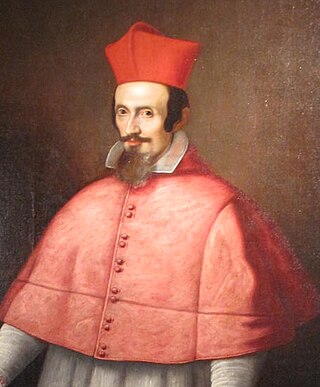
Cesare Monti was an Italian Cardinal who served as Latin Patriarch of Antioch and Archbishop of Milan.
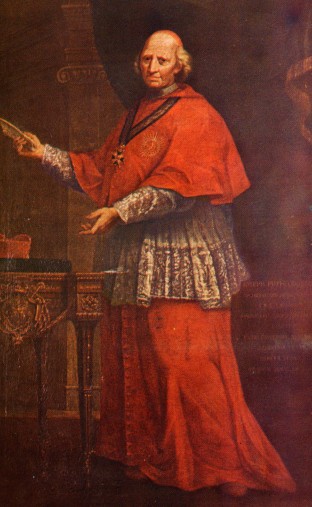
Giuseppe II Pozzobonelli was an Italian Cardinal and the Archbishop of Milan from 1743 to 1783.
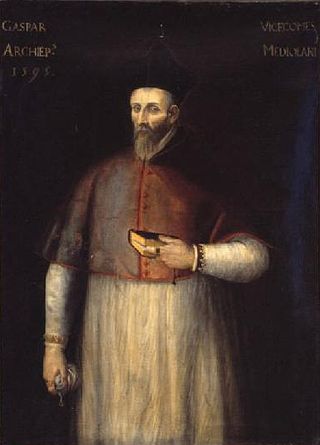
Gaspare Visconti was the Archbishop of Milan from 1584 to 1595.

Giuseppe Ripamonti was an Italian Catholic priest and historian. Ripamonti was a prolific writer, to the extent that he can be considered as the most important Milanese writer of the first half of the seventeenth century, alongside Federico Borromeo.
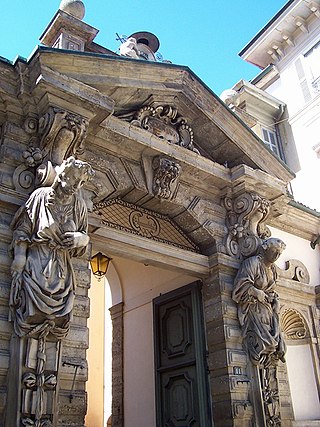
The archiepiscopal seminary of Milan is the Catholic seminary of the Archdiocese of Milan.

John the Good, also known as John Camillus, was Archbishop of Milan from c. 641 to 669. He is honoured as a saint in the Eastern Orthodox Church and Roman Catholic Church.

Benedetto II Erba Odescalchi (1679–1740) was an Italian Cardinal and Archbishop of Milan from 1712 to 1736.

Carlo III Gaetano Stampa (1667–1742) was an Italian cardinal and Archbishop of Milan from 1737 to 1742.
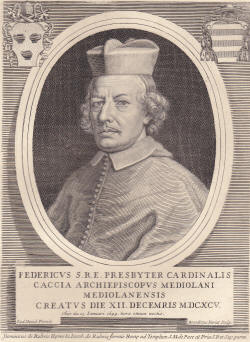
Federico Caccia was an Italian diplomat, Cardinal, and Archbishop of Milan from 1693 to 1699.

Filippo Maria Visconti (1721–1801) was the Archbishop of Milan from 1784 to 1801.

Domenico Maria Corsi was a Catholic cardinal who served as Bishop of Rimini from 1687 to his death, and as Legate of Romagna from 1687 to 1693.




















